The Porsche Cayenne evolves

The Porsche Cayenne's keyfob is something of an automotive novelty. Over the decades, the humble ignition key has evolved steadily from nugget of metal to multi-functional device. With manufacturers putting time and energy into differentiating their plipper from everyone else's, Porsche's effort stands out: rather than produce a sleek block of black plastic, the company's designers have sculpted the little three button device to resemble a miniature version of the car itself, complete with ersatz headlights, a rising roofline and the stylised outline of the side glass. It won't be long, we imagine, before key fobs jangle with dainty scale models of the car they unlock and start up.
See more of the new Porsche Cayenne
Put simply, the Cayenne is an SUV that thinks it's a car. Introduced in 2002, the Cayenne simultaneously horrified Porsche purists and delighted Stuttgart's accountants, with impressive sales that have helped the company deliver solid financial results in the gaping maw of global recession. As the Cayenne has evolved, it has grown steadily more powerful, culminating in the 550 hp Turbo S model, one of the fastest SUVs on the market.
In any other era, this combination of size and swiftness would be hailed for the engineering achievement it undoubtedly is, but right now the Cayenne feels slightly out of time.
Developed in conjunction with Volkswagen at the turn of the century (it shares many parts with the VW Toureg), the Cayenne has far better road manners than most family saloons yet feels as if it was built for a world that no longer exists. It's not just the wailing and keening of the purists, offended by the presence of the Porsche badge on something far removed from a traditional sports car. With physical scale and fuel economy high up the public and political agenda, the Cayenne makes a conspicuously contrary statement.
Right now, none of this matters when there are sales to be made. There's an all-new Cayenne lurking on the horizon, as the current model reaches the end of its production life. With it will come Porsche's first hybrid system, currently being tested on a fleet of Mark 1 Cayennes and also due for installation in the Panamera. It's barely a decade since the first hybrids made their way to market, quirky Japanese models that had to build their brand allure from scratch, but with an impending flood of hybrid models from the German luxury brands, the image of the electrically assisted car is about to be comprehensively shaken up.
At the moment, if consumption issues are all that's keeping you from upscaling your mode of transport, consider the Cayenne Diesel. The big diesel engine gives you plenty of torque, more than enough to give this sizeable car a suitable turn of speed, although the combination of clattering noise (barely audible from inside but very obvious to anyone standing alongside the car) and the even greater absence of sports car dynamics make this model the choice of the conscientious brand collector and not a true aficionado. Conscience has its rewards, however, not least far better fuel economy.
Wallpaper* Newsletter
Receive our daily digest of inspiration, escapism and design stories from around the world direct to your inbox
There's also the new Cayenne GTS Design Edition, a limited production run that gets exclusive paint, details and interior finishes, tapping into the carmaker's sister company's product design expertise.
With the long-awaited Porsche Panamera making its global debut at April's Shanghai Motor Show, the Cayenne will get its first true rival. Porsche presumably feels each model will secure its own distinct customer base, but both offer a similar level of practicality and performance, with the Panamera's low stance implying a more sporting driver experience. Anyone in the market for a fast four door should watch this space and wait.
Jonathan Bell has written for Wallpaper* magazine since 1999, covering everything from architecture and transport design to books, tech and graphic design. He is now the magazine’s Transport and Technology Editor. Jonathan has written and edited 15 books, including Concept Car Design, 21st Century House, and The New Modern House. He is also the host of Wallpaper’s first podcast.
-
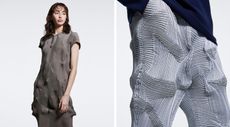 Get to know Issey Miyake’s innovative A-POC ABLE line as it arrives in the UK
Get to know Issey Miyake’s innovative A-POC ABLE line as it arrives in the UKAs A-POC ABLE Issey Miyake launches in London this week, designer Yoshiyuki Miyamae gives Wallpaper* the lowdown on the experimental Issey Miyake offshoot
By Jack Moss Published
-
 Eurovision unveils its 2024 stage, designed by Beyoncé's Renaissance Tour creatives
Eurovision unveils its 2024 stage, designed by Beyoncé's Renaissance Tour creativesThis year's stage design aims to bring the audience into the performance more than ever before.
By Charlotte Gunn Published
-
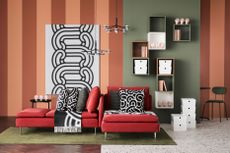 Ikea meets Japan in this new pattern-filled collection
Ikea meets Japan in this new pattern-filled collectionNew Ikea Sötrönn collection by Japanese artist Hiroko Takahashi brings Japan and Scandinavia together in a pattern-filled, joyful range for the home
By Rosa Bertoli Published
-
 Coming soon: a curated collection of all the new EVs and hybrids that matter
Coming soon: a curated collection of all the new EVs and hybrids that matterWe've rounded up new and updated offerings from Audi, Porsche, Ineos, Mini and more to keep tabs on the shifting sands of the mainstream car market
By Jonathan Bell Published
-
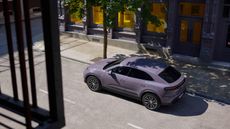 Porsche transforms the Macan into its newest all-electric model
Porsche transforms the Macan into its newest all-electric modelThe new Porsche Macan 4 and Macan Turbo are compact electric SUVs that mark a major step in the company’s transformation into a luxury EV maker
By Jonathan Bell Published
-
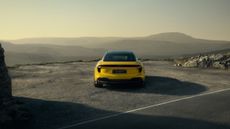 24 transportation design innovations for 2024
24 transportation design innovations for 2024From electric cars to new airports and sports boats, here’s a non-exhaustive list of 24 of the most interesting transportation design innovations to expect in the coming year
By Jonathan Bell Published
-
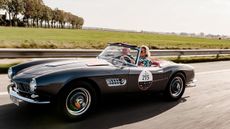 Zoute Grand Prix is a car fest like no other at a pristine Belgian beachside town
Zoute Grand Prix is a car fest like no other at a pristine Belgian beachside townAmy Serafin takes to the well-heeled streets of Knokke-Heist to experience the Zoute Grand Prix, its annual cavalcade of classic car-related events, from a rally to an auction
By Amy Serafin Published
-
 Porsche and Frauscher take to the waves with all-electric 850 Fantom Air boat
Porsche and Frauscher take to the waves with all-electric 850 Fantom Air boatAn electric sports day cruiser, the Frauscher x Porsche 850 Fantom Air is a swift and luxurious floating showcase for the sport car maker’s advanced electric drive systems
By Jonathan Bell Published
-
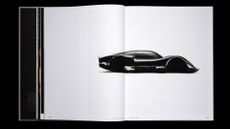 New book ‘Artifacts’ charts the history of Porsche through its archives
New book ‘Artifacts’ charts the history of Porsche through its archivesUnwrap this beautifully designed book and dive into Porsche’s extensive historic archives, courtesy of Type 7 and ERG Media
By Jonathan Bell Published
-
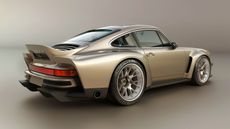 Singer Vehicle Design unveils newly reimagined Porsche 911, the DLS Turbo
Singer Vehicle Design unveils newly reimagined Porsche 911, the DLS TurboInspired by the full-blooded endurance racers of the 1970s, this bold Dynamics & Lightweighting Study is the ultimate in bespoke, retromodded supercars
By Jonathan Bell Published
-
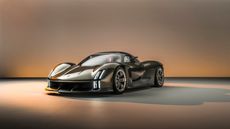 Porsche Mission X concept sees the marque set its sights high
Porsche Mission X concept sees the marque set its sights highThis all-electric hypercar has lofty performance goals and a new look for Porsche sports cars. Will it reach production?
By Jonathan Bell Published